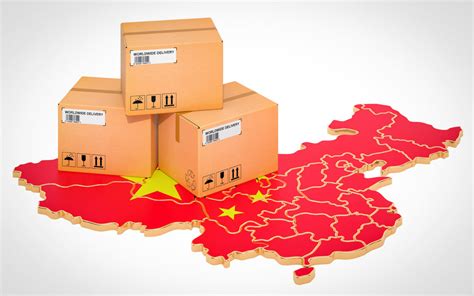USPS China Parcel U-Turn: Confusion Reigns

Discover more detailed and exciting information on our website. Click the link below to start your adventure: Visit Best Website epicpulse.us.kg. Don't miss out!
Table of Contents
USPS China Parcel U-Turn: Confusion Reigns
The recent upheaval in USPS handling of parcels originating from China has left importers, online sellers, and consumers reeling. A sudden shift in policy, seemingly without clear communication, has resulted in widespread confusion, delays, and frustration. This article will dissect the situation, exploring the reasons behind the change, its impact, and what you can do if you’re affected.
The U-Turn Explained: What Happened?
For months, many parcels from China processed through the USPS experienced relatively smooth transit times. Then, seemingly overnight, a significant slowdown occurred. Packages that previously arrived within a reasonable timeframe now face weeks, sometimes months, of delay. This isn't a simple case of increased volume; reports suggest a deliberate policy shift by the USPS, impacting both ePacket and other shipping methods from China. The exact reasons remain shrouded in ambiguity, leaving many to speculate.
Lack of Transparency: The USPS's Communication Failure
One of the most frustrating aspects of this situation is the glaring lack of transparency from the USPS. Official statements, if any, have been vague and insufficient to address the concerns of affected parties. This lack of communication has fueled speculation, with theories ranging from trade disputes to internal logistical issues. This silence only exacerbates the problem, leaving businesses and individuals scrambling for answers. The absence of clear updates makes it difficult to plan for future shipments and manage customer expectations.
Impact of the Delays: Ripple Effects Across Industries
The consequences of the USPS China parcel slowdown are far-reaching, impacting various sectors:
E-commerce Businesses: A Major Blow
Online retailers heavily reliant on Chinese suppliers are feeling the brunt of these delays. Delayed deliveries lead to frustrated customers, negative reviews, and potentially lost sales. Inventory management becomes significantly more challenging, leading to stockouts and missed sales opportunities. The unpredictable transit times make it almost impossible to accurately forecast demand and maintain efficient supply chains.
Consumers: Patience Wearing Thin
Consumers, ultimately, bear the cost of these disruptions. Longer waiting times, uncertainty about package location, and the potential for lost or damaged goods create immense dissatisfaction. The lack of information from both the shipping carrier and the seller exacerbates the frustration, leading to negative online reviews and damage to brand reputation.
US Businesses Importing from China: Significant Disruption
Businesses importing goods from China are experiencing significant logistical and financial setbacks. Delayed shipments mean missed deadlines, potential penalties for late deliveries, and increased holding costs. The unpredictability of delivery times makes it extremely difficult to plan production schedules and manage inventory effectively.
Speculation and Theories: Understanding the Possible Causes
While the USPS remains tight-lipped, several theories attempt to explain this sudden policy shift:
Trade Tensions with China: A Contributing Factor?
The ongoing trade tensions between the US and China have been cited as a possible contributing factor. While not explicitly confirmed, it's plausible that the slowdown reflects a subtle shift in trade policy, albeit one implemented without clear communication.
Increased Parcel Volume: A Logistical Nightmare?
The unprecedented increase in e-commerce, particularly since the pandemic, has placed immense strain on global logistics networks. The USPS, like many other carriers, might be struggling to cope with the sheer volume of parcels, leading to processing delays. However, this alone doesn't fully explain the sudden and significant change in transit times.
Internal Operational Issues: Behind the Scenes Problems?
Internal operational issues within the USPS itself could also be playing a role. Staffing shortages, outdated infrastructure, or inefficiencies in processing could all contribute to the slowdown. Again, the lack of transparency from the USPS makes it difficult to assess the validity of this theory.
What Can You Do?
If you're affected by the USPS China parcel slowdown, here are some steps you can take:
- Track your package diligently: Use the tracking number to monitor its progress, although information may be limited.
- Contact the seller: Inform the seller of the delay and request updates. They may be able to offer alternative solutions or compensation.
- Consider alternative shipping options: Explore alternative carriers for future shipments from China, although this might come with higher costs.
- Be patient (but persistent): Delays are frustrating, but remain persistent in seeking updates and solutions.
- Leave feedback: Share your experience with the USPS and online retailers. This feedback can help put pressure on the relevant parties to address the issue.
The Future of USPS China Shipping: Uncertain Times Ahead
The current situation surrounding USPS China parcel shipping remains uncertain. Until the USPS provides clearer explanations and implements solutions, businesses and consumers will continue to face uncertainty and disruption. The lack of communication is perhaps the most damaging aspect of this situation, eroding trust and highlighting the urgent need for greater transparency from the USPS. Only time will tell whether this is a temporary blip or a sign of more significant changes to come in US-China postal relations. The ongoing situation serves as a stark reminder of the interconnectedness of global trade and the vulnerability of businesses and consumers to unforeseen disruptions in shipping logistics.

Thank you for visiting our website wich cover about USPS China Parcel U-Turn: Confusion Reigns. We hope the information provided has been useful to you. Feel free to contact us if you have any questions or need further assistance. See you next time and dont miss to bookmark.
Also read the following articles
| Article Title | Date |
|---|---|
| How To Watch Nfl Honors 2025 Live | Feb 07, 2025 |
| See Broncos At 2025 Nfl Honors | Feb 07, 2025 |
| Watch 2025 Nfl Honors Streaming Guide | Feb 07, 2025 |
| Usps Update Accepting Packages From China | Feb 07, 2025 |
| Allen Wins Ap Nfl Mvp Award | Feb 07, 2025 |
